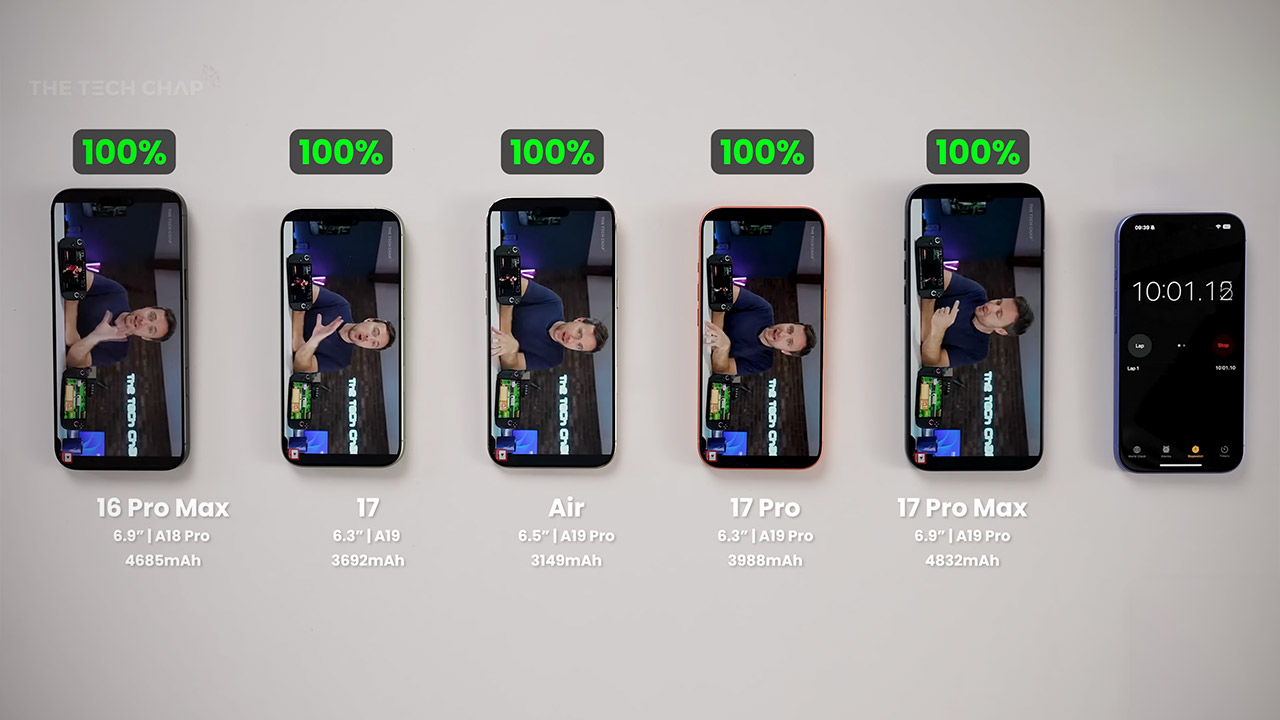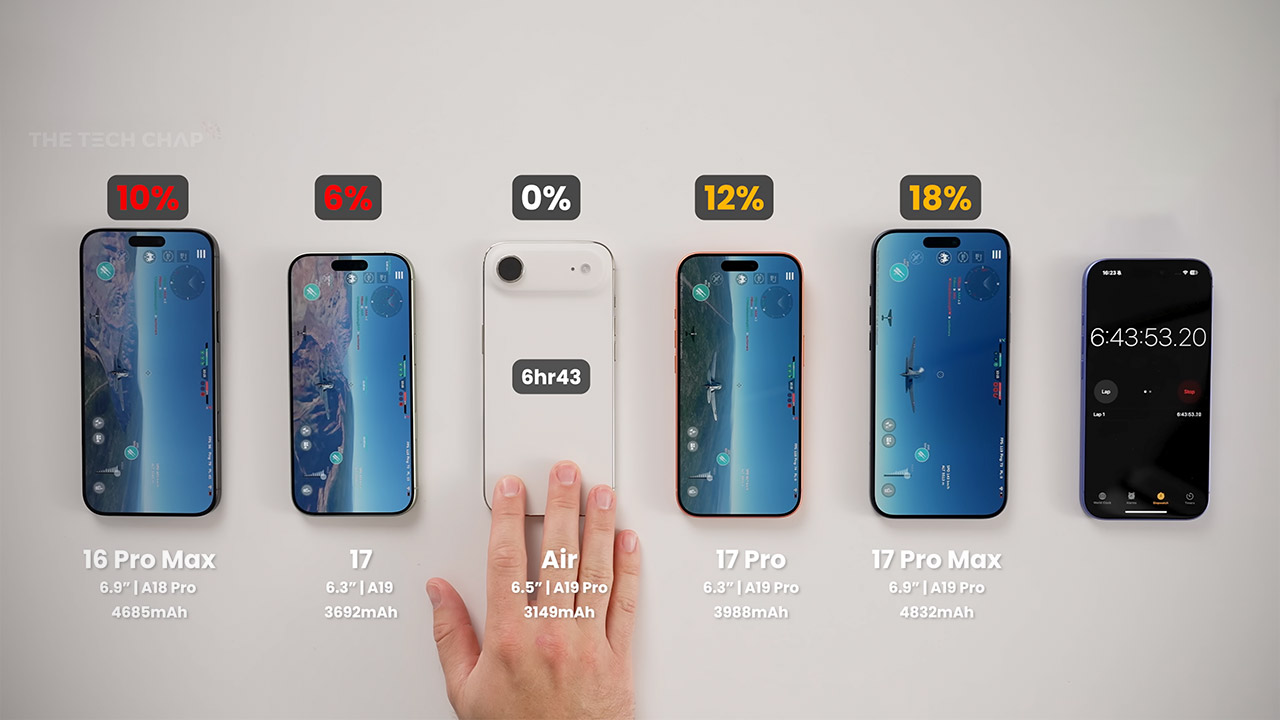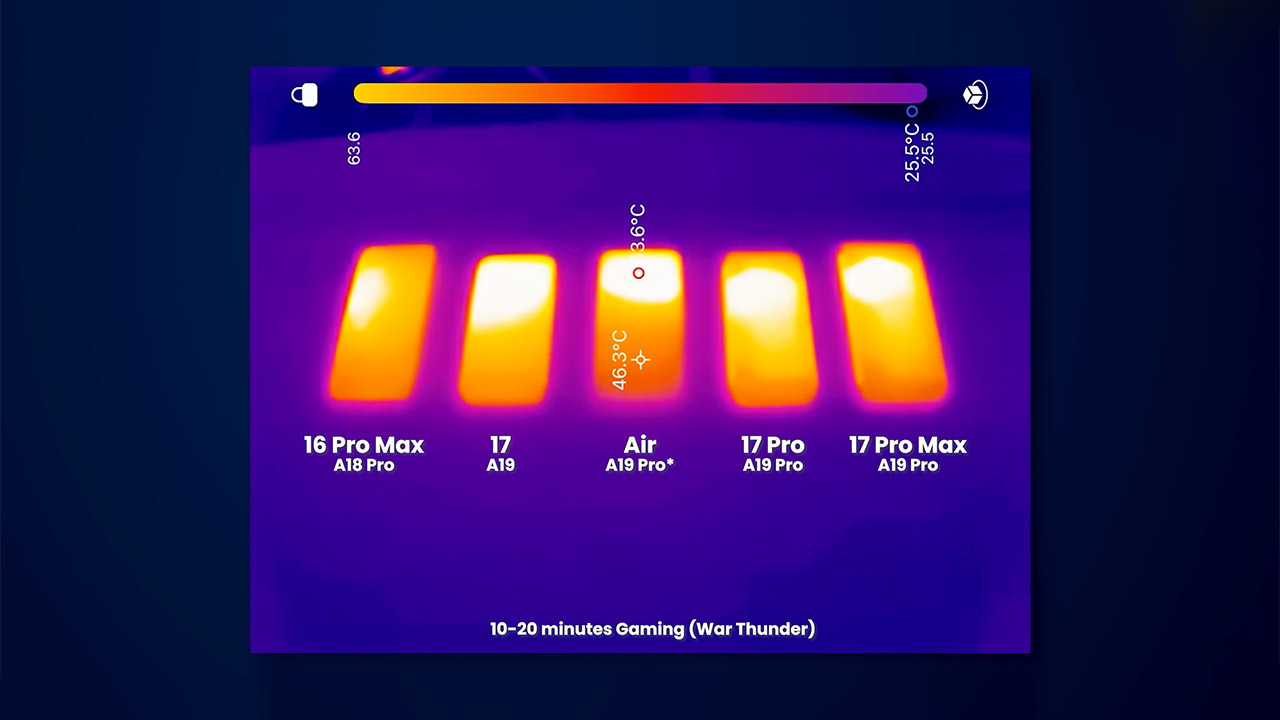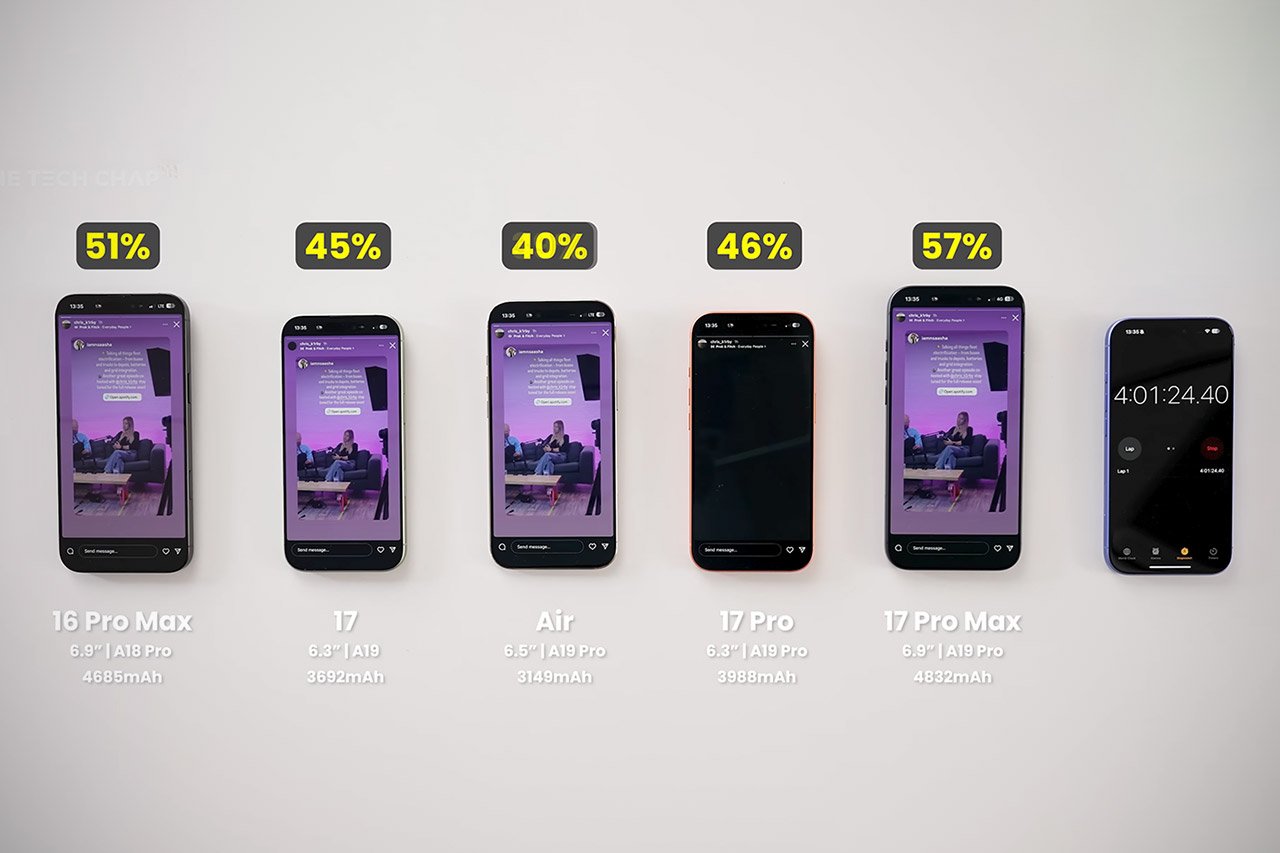Apple’s iPhone 17 series is out now and with that comes the usual questions of how they compare. One of the biggest issues for any new phone is battery life—how long will these sleek devices last in real life? The Tech Chap put the iPhone 17, iPhone Air, iPhone 17 Pro and iPhone 17 Pro Max through a battery test, with last year’s iPhone 16 Pro Max as a reference.
Every phone in the test started with a full charge and 100% battery health. The Tech Chap used brand new devices, including a freshly purchased iPhone 16 Pro Max, to avoid any degradation from previous use. All ran the latest iOS 26, released just a day before the test, with no beta software in sight. Background apps were closed, brightness levels matched and each phone was restarted before the test began. The setup cycled through a mix of tasks—YouTube streaming, gaming (War Thunder), Instagram, TikTok and 4K video recording—to mimic real world use. To add realism the test alternated between Wi-Fi and cellular (eSIM) connections after each app rotation, just like how people switch networks throughout the day. Notably all phones, including the base models, had Apple’s ProMotion technology running at a dynamic 1 to 120 Hz refresh rate, a first for a Tech Chap battery test where 60 Hz complaints are no longer an issue.
Sale

TOCOL for iPhone 17 Pro Max Case, Compatible with Magsafe, Full Camera Protection, Built-in Magnetic…
- Embedded Magnetic Ring:Only for iPhone 17 Pro Max Case 6.9 inch, Built-in magnetic ring never falls off. 18N ultra-strong power, perfect for all…
- Crafted for Camera Security: We innovate an All-inclusive rear camera, The Case frame that is 0.8mm higher than the camera lens. Prevents scratches…
- Super Drop Protection: Designed for iPhone 17 Pro Max case is made of TPU cushioning with a four layer cushioning structure, and is equipped with a…
A notable aspect of the test is the iPhone Air’s use of Apple’s new C1X modem designed for efficiency. This modem is exclusive to the Air and is supposed to stretch battery life especially on cellular networks. Another twist: Apple’s eSIM only models, available in regions like the US, Canada, Mexico and Japan, have larger batteries than their physical SIM counterparts in regions like the UK where this test was conducted. Apple claims that eSIM-only devices can increase battery life by up to 2 hours during video playback, but actual increases will be less. The Tech Chap used physical SIM versions for the iPhone 17, 17 Pro, and 17 Pro Max, but the Air is eSIM only globally, eliminating this variation.

The results started with a YouTube streaming test, with the iPhone 17 Pro Max leading the way at 63% battery remaining, just ahead of the iPhone 16 Pro Max at 62%. The 17 Pro was next at 58%, with the 17 and Air tied at 49%. Many expected the ultra-thin Air, with its smaller battery, to be further behind. To dig deeper, The Tech Chap charged all phones to 100% and played an hour of War Thunder, a demanding game, with MagSafe settings. The 17 Pro Max was again top at 82% remaining, followed by the 17 Pro at 80%. The 16 Pro Max dropped to 78%, while the 17 and Air both fell to 71%, which is pretty much the same.

The iPhone Air died first in the final drain test which included Wi-Fi, cellular, gaming and everyday apps after 6 hours and 43 minutes. The iPhone 17 followed 12 minutes later at 6 hours and 55 minutes, a shorter gap than expected considering the Air’s thin form. The iPhone 16 Pro Max, last year’s battery champion, died after 7 hours and 29 minutes, but the iPhone 17 Pro outlasted it by 7 hours and 34 minutes with 2% battery remaining. The iPhone 17 Pro Max, naturally, took the lead at 7 hours and 58 minutes with 9% battery remaining – potentially an extra hour or two in real world use.

Heat management was also key as The Tech Chap used a thermal imaging camera after 30 minutes of War Thunder and the iPhone Air was the hottest, with heat concentrated around the processor at the top. After 10 minutes of intense use the iPhone 17 was the hottest device. Meanwhile the Pro and Pro Max models which have vapor chamber coolers dispersed the heat more evenly and kept temperatures in check. So the Air and 17 will feel warmer during demanding workloads like gaming but the Pro models can handle continuous loads better.
